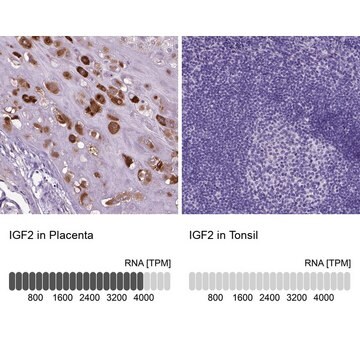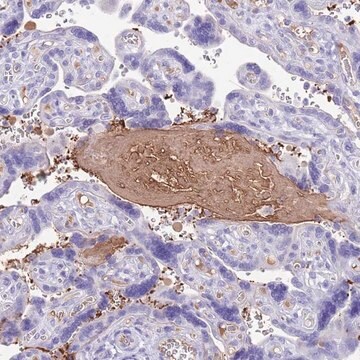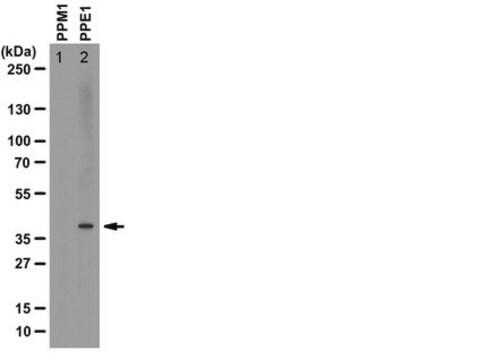MABS460-I
Anti-FGF23 Antibody, clone 278-2
About This Item
Polecane produkty
pochodzenie biologiczne
human
Poziom jakości
białko sprzężone
unconjugated
forma przeciwciała
purified antibody
rodzaj przeciwciała
primary antibodies
klon
278-2, monoclonal
masa cząsteczkowa
calculated mol wt 27.95 kDa
observed mol wt ~37 kDa
oczyszczone przez
using protein G
reaktywność gatunkowa
human
opakowanie
antibody small pack of 100 μg
metody
flow cytometry: suitable
western blot: suitable
izotyp
IgG1κ
sekwencja epitopowa
Unknown
numer dostępu Protein ID
numer dostępu UniProt
Warunki transportu
2-8°C
docelowa modyfikacja potranslacyjna
unmodified
informacje o genach
human ... fgf23> FGF23(8074)
Powiązane kategorie
Opis ogólny
Specyficzność
Immunogen
Zastosowanie
Evaluated by Western Blotting in Human brain tissue lysates.
Western Blotting Analysis: A 1:1,000 dilution of this antibody detected FGF23 in Human brain tissue lysates.
Tested Applications:
Flow Cytometry Analysis (FC): 1 μg of this antibody detected Fibroblast growth factor 23 (FGF23) in one million Jurkat cells pretreated with Brefeldin A (1 μg/mL 4 h).
Postać fizyczna
Przechowywanie i stabilność
Inne uwagi
Oświadczenie o zrzeczeniu się odpowiedzialności
Nie możesz znaleźć właściwego produktu?
Wypróbuj nasz Narzędzie selektora produktów.
Kod klasy składowania
12 - Non Combustible Liquids
Klasa zagrożenia wodnego (WGK)
WGK 1
Temperatura zapłonu (°F)
Not applicable
Temperatura zapłonu (°C)
Not applicable
Certyfikaty analizy (CoA)
Poszukaj Certyfikaty analizy (CoA), wpisując numer partii/serii produktów. Numery serii i partii można znaleźć na etykiecie produktu po słowach „seria” lub „partia”.
Masz już ten produkt?
Dokumenty związane z niedawno zakupionymi produktami zostały zamieszczone w Bibliotece dokumentów.
Nasz zespół naukowców ma doświadczenie we wszystkich obszarach badań, w tym w naukach przyrodniczych, materiałoznawstwie, syntezie chemicznej, chromatografii, analityce i wielu innych dziedzinach.
Skontaktuj się z zespołem ds. pomocy technicznej







